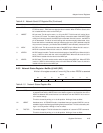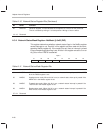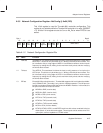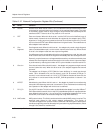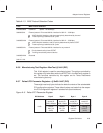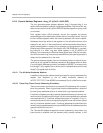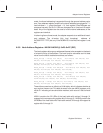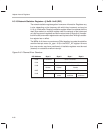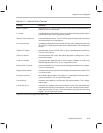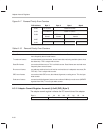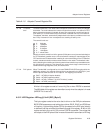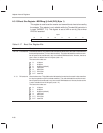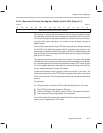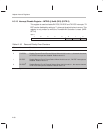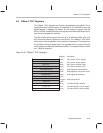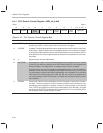
Adapter Internal Registers
A-33
Register Definitions
Table A–14. Ethernet Error Counters
Counter Definition
Good Tx frames are without errors. This is a 24-bit counter. Good frames are transmitted more
frequently than errored frames.
Tx frames are aborted during transmission, due to frame data not being available (due to
host bus latencies). This is a byte-wide counter.
Good Rx frame underruns are received without errors. This is a 24-bit counter. Good frames are received
more frequently than errored frames.
Rx overrun frames are address-matched and could not be received due to inadequate resources
(Rx FIFO full) or because their frame size exceeded MaxRx. This is a byte-wide
counter.
Deferred Tx frames were deferred to prior network traffic on their initial attempt at transmission.
This is a 16-bit counter.
CRC error frames are received with CRC errors, but without alignment or coding errors. This is
a byte-wide counter.
Code error frames are received with alignment (not an even number of nibbles) or code errors
(MRXER signaled from PHY). This is a byte-wide counter.
Multicollision Tx frames have encountered 2 to 15 collisions before being transmitted on the network.
This is a 16-bit counter.
Single collision frames have encountered one collision before being transmitted on the network. This
is a 16-bit counter.
Excessive collisions have failed to gain access to the network in 16 attempts (frames that experi-
enced 16 collisions). This is a byte-wide counter.
Late collisions have been interrupted by a collision after the network slottime. This is a byte-
wide counter.
Carrier loss errors
are sent by the adapter and for which a receive carrier was not detected after
a slottime from the start of transmission. The carrier must be present continu-
ously from this point until the end of transmission to prevent an error being
logged.
†
This is a byte-wide counter.
†
Carrier loss errors are not logged in full-duplex mode.



